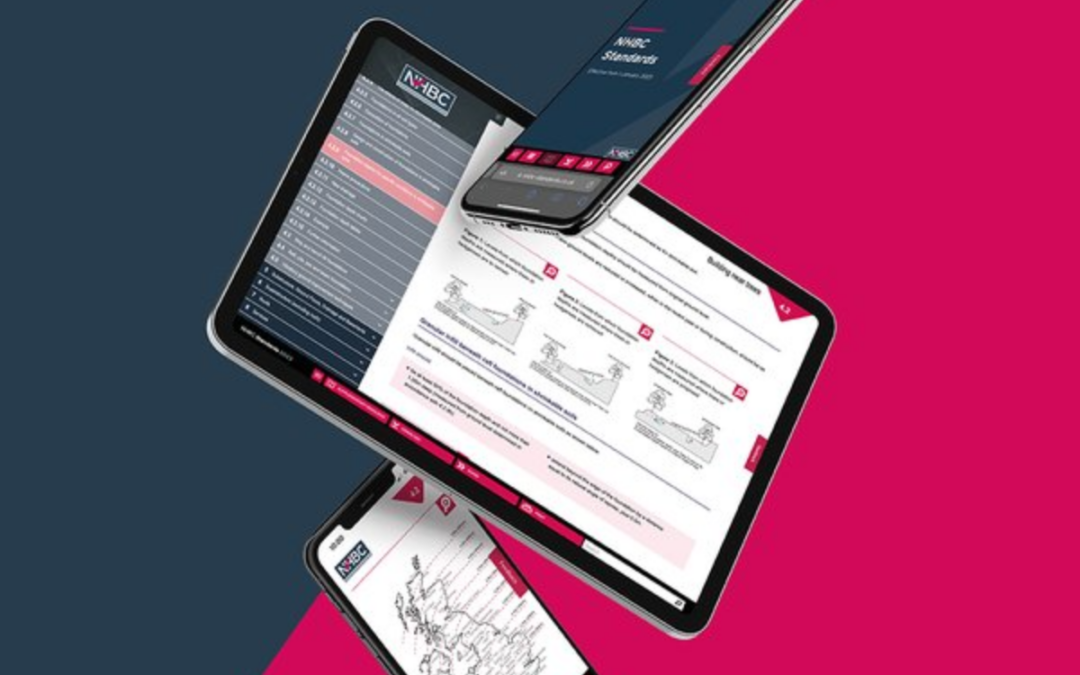
by Clair Mooney | Jan 26, 2023 | Building Safety Act
The Building Safety Act is the foundation of a new building safety regime for the construction sector and represents the most significant change to industry regulation in a generation. With many of the new requirements coming into force this year, FIS members have access to a newly published comprehensive overview of the regime, compiled by Build UK. This guidance will ensure all members are aware of their responsibilities and includes information on:
- New bodies that will provide effective oversight of the new regime
- New responsibilities for all those who design, build, own or manage Higher Risk Buildings
- New systems designed to improve levels of competence and formalise processes
- Existing legislation which will be reformed
- Other activities outside the scope of the Act but related to building safety.
The guide will be regularly updated as secondary legislation and supporting guidance from industry is published. It has been welcomed by Dame Judith Hackitt, Chair of the Industry Safety Steering Group, who said:
“This guide provides Build UK members across the supply chain with a clear and accessible summary of what the Building Safety Act means for them and their organisation. I urge you to not just read this guide but to then discuss what it means for your organisation and how your practices need to change.”

by Iain McIlwee | Jan 20, 2023 | Building Safety Act
New Guidance has been published by the Home Office to help conduct routine checks on fire doors and provide information to residents. This guide is aimed at Responsible Persons carrying out simple checks upon a fire door. It is based on the assumption that the fire risk assessment has already assessed the suitability of the fire doors.
This short guide is intended to assist those with duties under the Fire Safety (England) Regulations to comply with regulation 10, which makes requirements about fire doors in all buildings that contain two or more domestic premises and that contain common parts, through which residents would need to evacuate in a fire.
Regulation 10 makes requirements in relation to two matters, namely:
- information about flat entrance doors that the Responsible Person must give to all residents (whether tenants or leaseholders) – this requirement relates to all blocks of flats
- routine checks of fire doors that the Responsible Person must ensure are carried out – these checks are only required in blocks of flats in which the top storey is more than 11m above ground level (typically, a building of more than four storeys)
The guidance includes a simple checklist.
The Fire Safety (England) Regulations 2022 were placed on the statute book on 18 May 2022, and came into force on 23 January 2023.
The full guidance is available here

by Clair Mooney | Jan 19, 2023 | Building Safety Act, Technical
With the Building Safety Act now in force, we are seeing changes to the wider building regulations continuing apace. Below are two key changes of significant note.
- The ban on the use of combustible materials in and on the external walls of buildings with a storey at least 18 metres above ground level has been extended to include hotels, hostels and boarding houses. Metal Composite Material panels with unmodified polyethylene core (MCM PE) have been banned on all new buildings of any height.
- Announced last year, Approved Document B (Fire Safety) also now includes new requirements for external walls and balconies on new residential buildings between 11 and 18 metres in height to limit the combustibility of materials.
FIS is working on summarising key changes to Approved Document B across the wider scope of interior products, so watch out for this guidance in the coming weeks.
There also remains an open consultation on national classifications as a way of demonstrating compliance within Approved Document B. To find out more and feed your views into the FIS survey about this consultation, click here.

by Clair Mooney | Jan 19, 2023 | Building Safety Act, Technical
NHBC’s revisions to its Technical Standards are now live. The latest edition of the organisation’s Technical Standards applies to every new home registered with the new homes warranty and insurance provider where the foundations have been laid on or after 1 January 2023.
NHBC said its dedicated Standards team had spent the past year applying its expertise to a thorough review of all its technical content. It has been working with stakeholders across the industry “to ensure the Standards continue to provide trusted support and guidance for builders and developers”.
There have been significant changes and updates to several chapters, including:
- aligning with British Standards, including BS EN 1992, BS 8666 and BS 8102:2022
- updates to both concrete upper floor design and timber/joist deflection limits and to the weathertightness of windows, doors and glazing
- new guidance on the provision of horizontal movement joints on masonry clad buildings and on supporting single leaf garage walls
- addressing the low carbon agenda by:
– increasing cavity wall widths due to improving thermal performance standards
– a focus on renewable and sustainable technologies to reduce carbon footprint and provide alternative heating sources.
NHBC said its Technical Standards would continue to help builders and developers deliver “the highest possible new home standards and support the continuous improvement of the quality of new homes”.
Mark Russell, NHBC’s standards and policy manager, said:
“There have been significant changes to this year’s Standards to ensure they remain both relevant and accurate. We are sure the industry will find them a useful reference point as we all work to build safe, high-quality homes for everyone.”

by Clair Mooney | Dec 2, 2022 | Building Safety Act, Technical
Meeting the requirements of the Building Regulations is the first cornerstone of compliance. There are a number of Approved Documents for England which provide guidance and Approved Document (AD) B1 and B2 provide specific advice for Dwellings (B1) and Buildings other than Dwellings (B2)
On 1 December 2022 the Government reissued ADB1 and ADB2 to incorporate the amendments in 2020 and 2022.
The Department responsible for these approved documents, The Department for Levelling Up Housing and Communities (DLUHC), issued a Circular letter concerning revisions to Approved Document B and circular letter 02/2022. This provides further revisions made to correct errors made during amendment process earlier this year. The letter provides the original text plus the revised text which will come into force on 1 December 2022.
To view this circular letter, please click here.

by Clair Mooney | Nov 8, 2022 | Building Safety Act, Drylining, Technical
FIS and the Tall Building Working Group (TBWG) have published a report which investigates the causes of noise emanating through the fabric of some tall buildings, identifies methods of remediation and provides guidance for affected buildings.
The Tall Building Working Group (TBWG) was formed in 2018 to address a global phenomenon where creaking can be heard in tall residential towers in high wind conditions.
The group was established under the umbrella of trade body Finishes and Interiors Sector (FIS) and set about bringing together the entire supply chain, namely developers, tier 1 contractors, manufacturers, architects, specialist drylining contractors and engineers who are involved in the specification and construction of buildings where noise issues have been reported.
The starting point was to investigate the root cause of this phenomenon and then look at how occurrence can be reduced or better managed in new towers by providing better guidance for architects, engineers, designers and developers.
The group engaged with individuals and organisations from across the globe and absorbed the findings of all available secondary research before embarking on a structured research programme of their own, funded by members of the TBWG.
Further research was carried out by structural engineers WSP to present, in a graphical format, the inter-storey differential movement in vertical and horizontal directions affecting partitions and other elements of fit out. This document explains to the project fit out designer how a high-rise tower reacts to external loads.
- External loads make building move: non-structural elements should be installed in such a way to allow for the movements freely.
- Any locked in movement will cause distress in the non-structural elements.
- Any frictional resistance to movements will cause noise.
The key to reducing the phenomenon occurring in future tall towers is sharing the information contained in the structural engineer’s movement and tolerance reports early with the system owners of the drylining, and providing movement joints to allow the elements of the internal fit out to move independently.
Manufacturers have been exploring different solutions and methods of mitigation. At this stage none have been able to completely eliminate the sound.
Commenting on the work, FIS CEO Iain McIlwee said:
“I think this is a first. I cannot think of a single time when the construction supply chain has attacked a problem in this way. Rather than battening down the risk hatches, reaching for the contract and starting the blame game, this was a genuine attempt to work together to understand and collaborate to solve it. This is a body of work all involved can be proud of, not just because it will help unravel some potentially complex issues or maybe help people sleep more soundly, but because it is an example of how we can collaborate and be better as an industry.”
The TBWG is planning to hold another conference to share the report outcomes with the delivery teams, meanwhile a summary report is available here.






